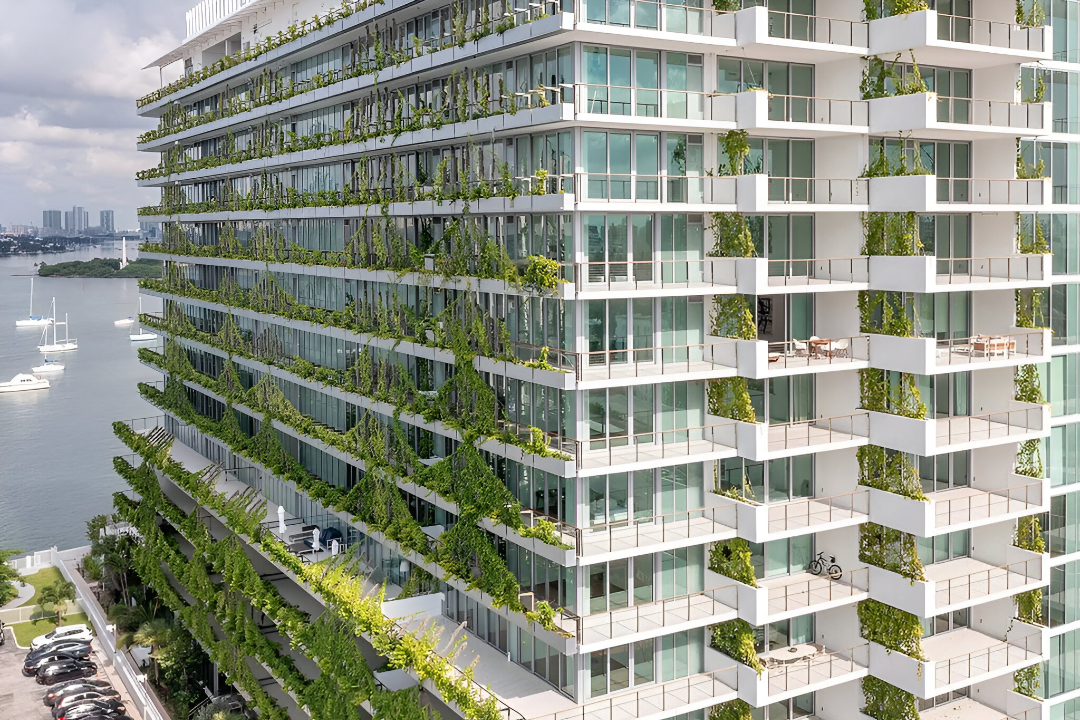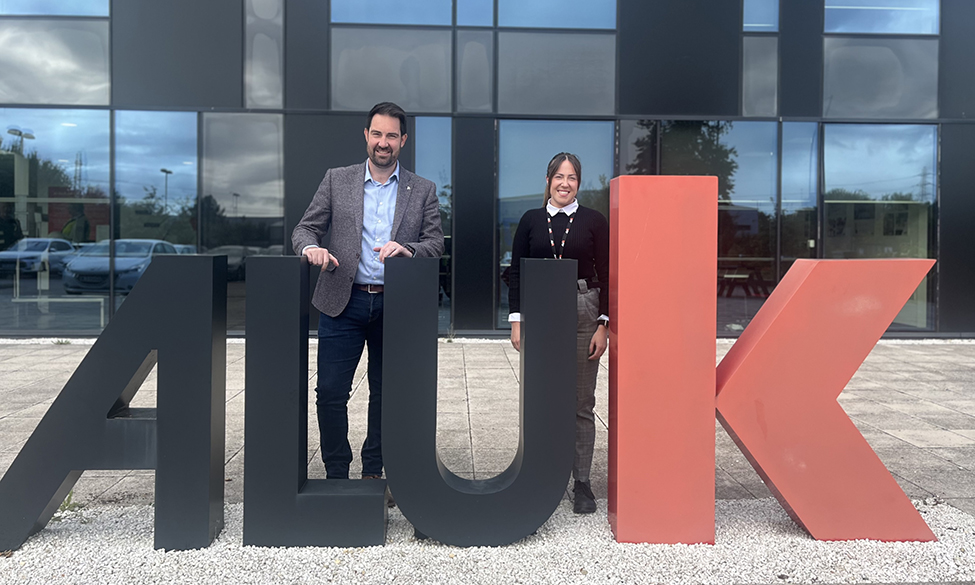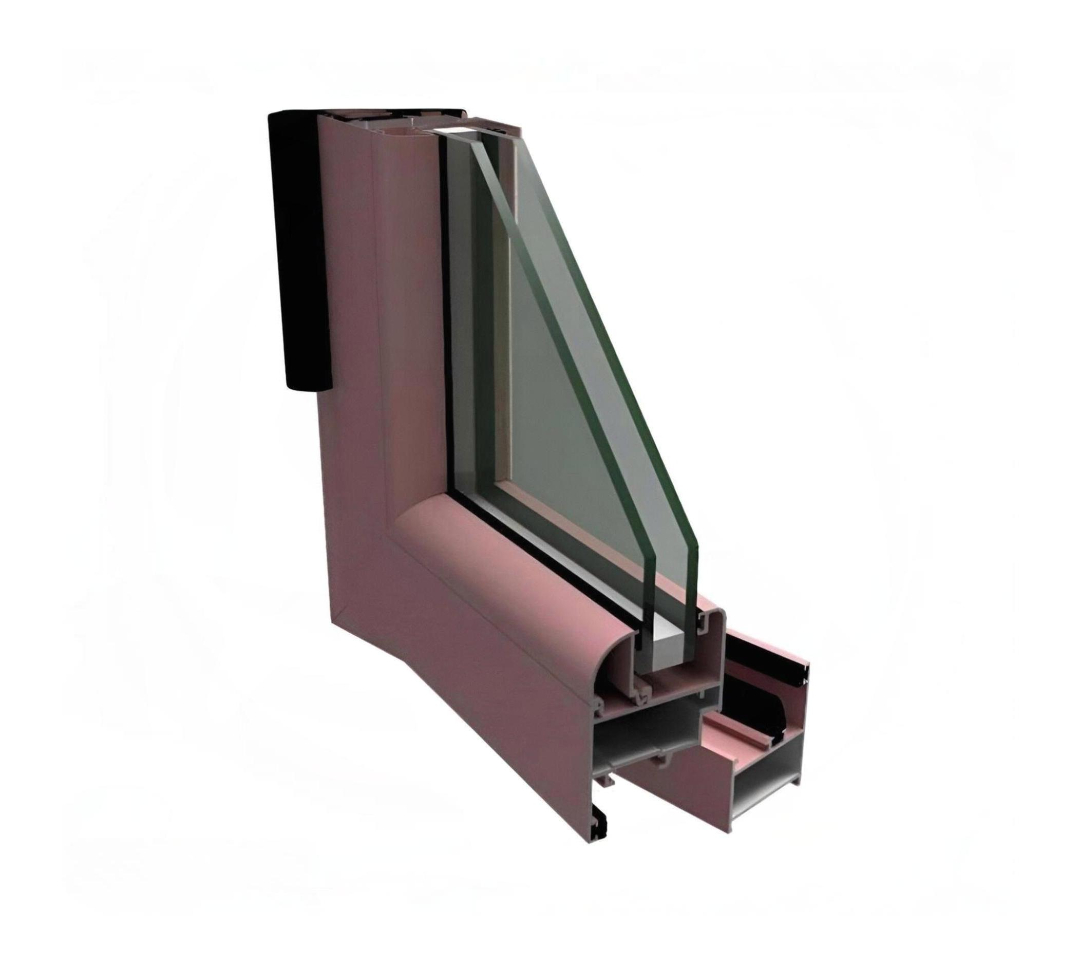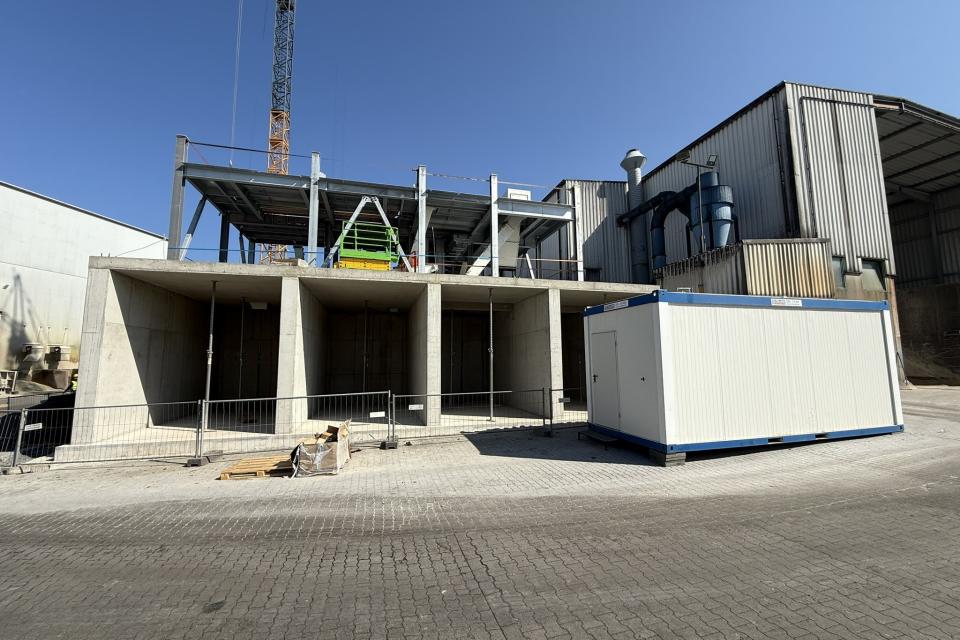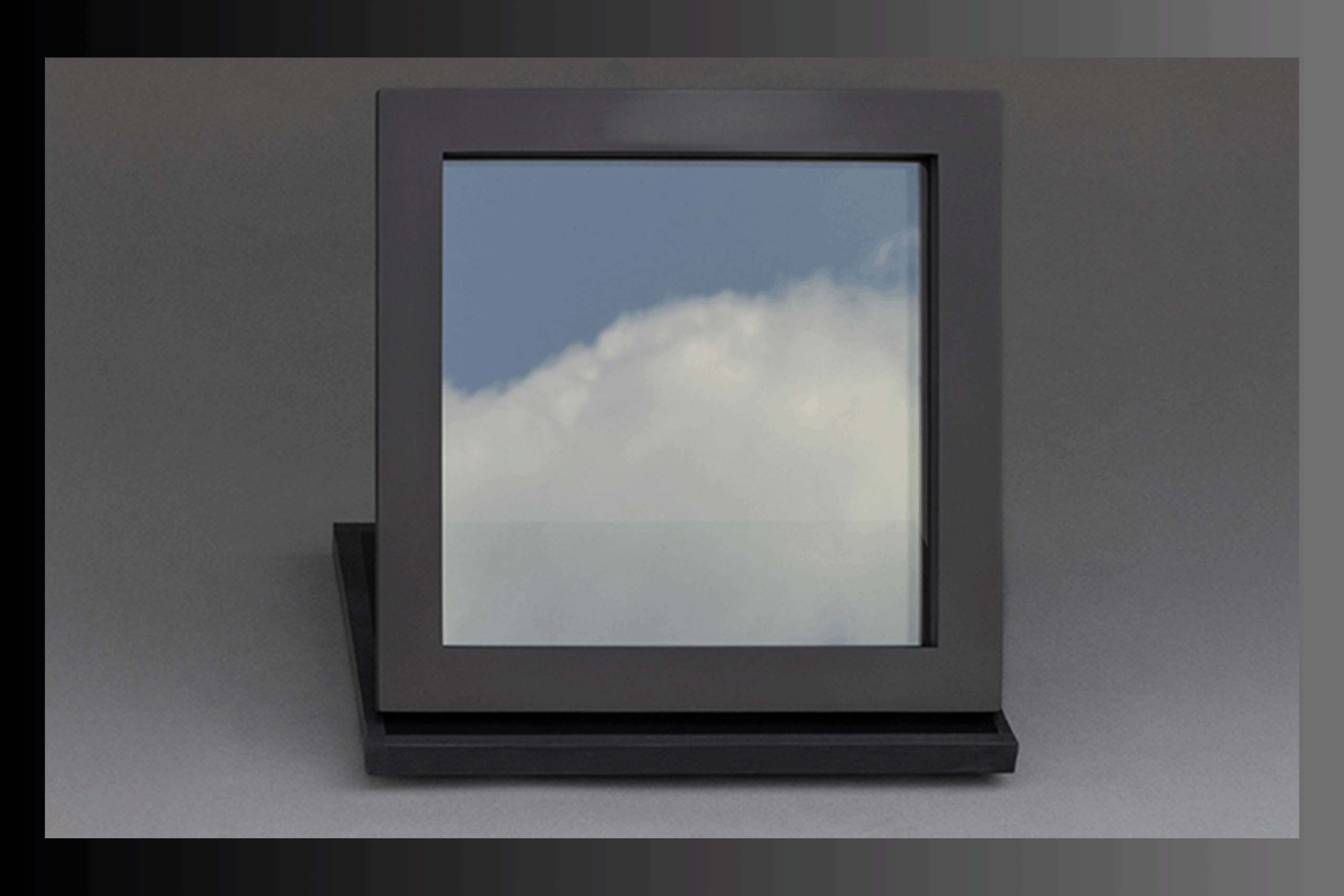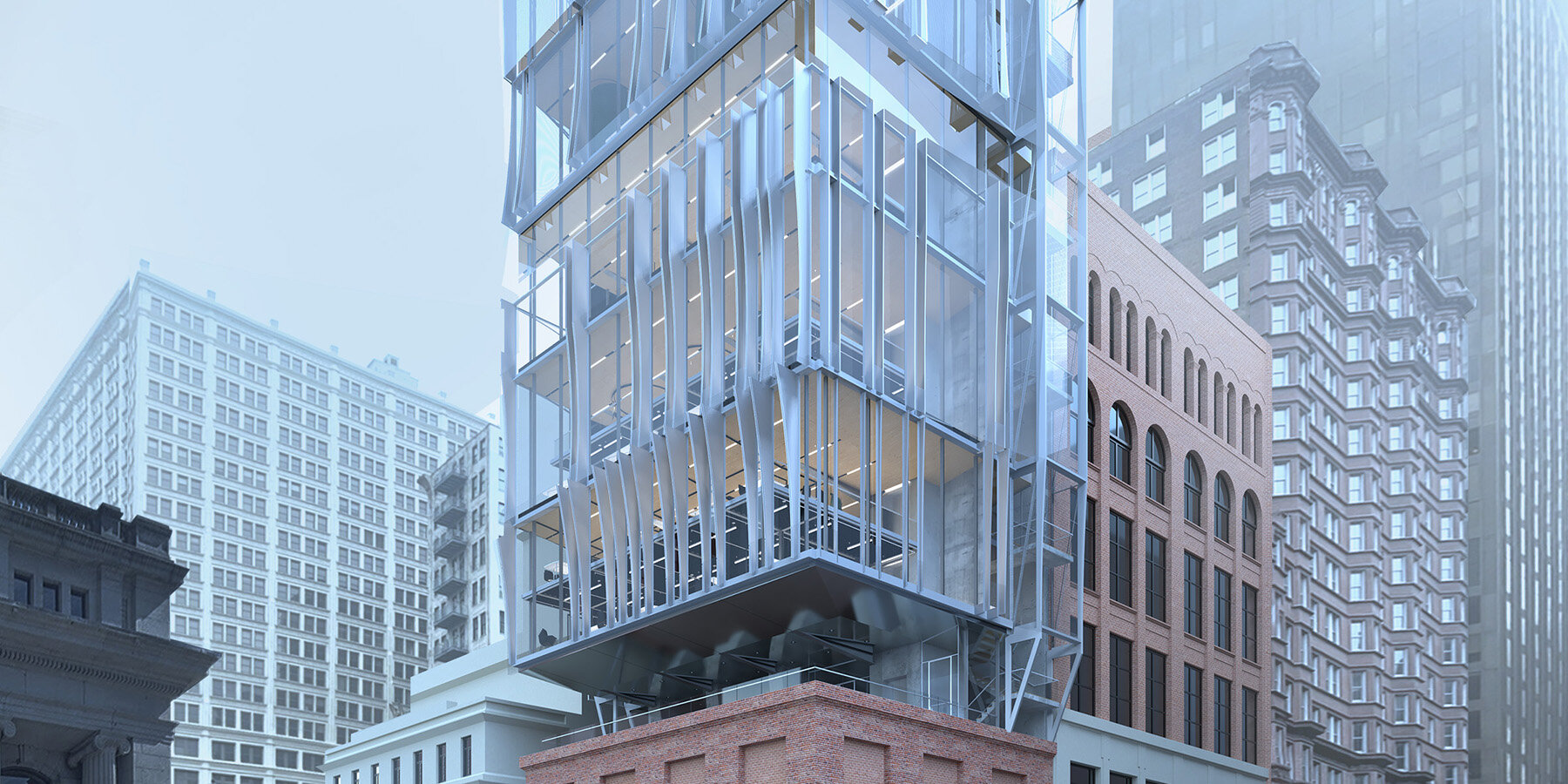Green façades are transforming modern architecture. By adding plants to walls, columns, and interior or exterior spaces, buildings can improve air quality, reduce surface temperatures, and promote ecological balance. Studies from The Centre for Architectural Ecology and ScienceDirect show that greening helps filter dust and CO₂, enhances natural ventilation, and supports sustainability.
Greening offers six main benefits. Interior temperatures can drop, saving up to 30% in energy through shading, cooling, and evaporation. Plants provide sun protection comparable to technical shading systems and absorb noise, improving comfort. They also pre-condition incoming air and shield building materials from extreme weather, extending their lifespan. Greening can hide unattractive elements and enhance the visual appeal of spaces.
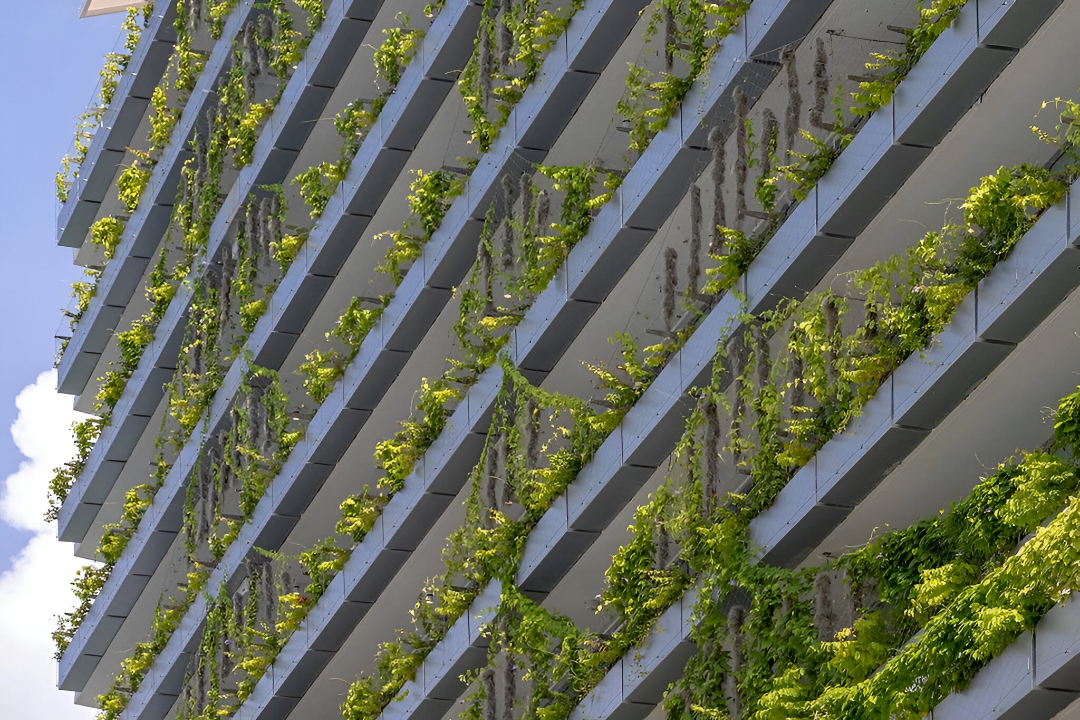

The Bentley Bay condominium project in Florida demonstrates these advantages. Its three-wall green façades climb naturally on Jakob Rope Systems’ Webnet wire mesh, anchored at each level. The stainless steel mesh has diamond apertures from 20mm to 180mm, secured with sleeves to prevent knotting, ensuring maintenance-free durability. The flexible mesh conforms to architectural contours while supporting plant growth and airflow.
This combination of plants and engineered mesh shows that green façades are more than aesthetic. They provide shading, ventilation, noise reduction, and material protection, making buildings more energy-efficient, environmentally responsible, and visually striking.
Source: jakob-usa.com with additional information added by Glass Balkan
